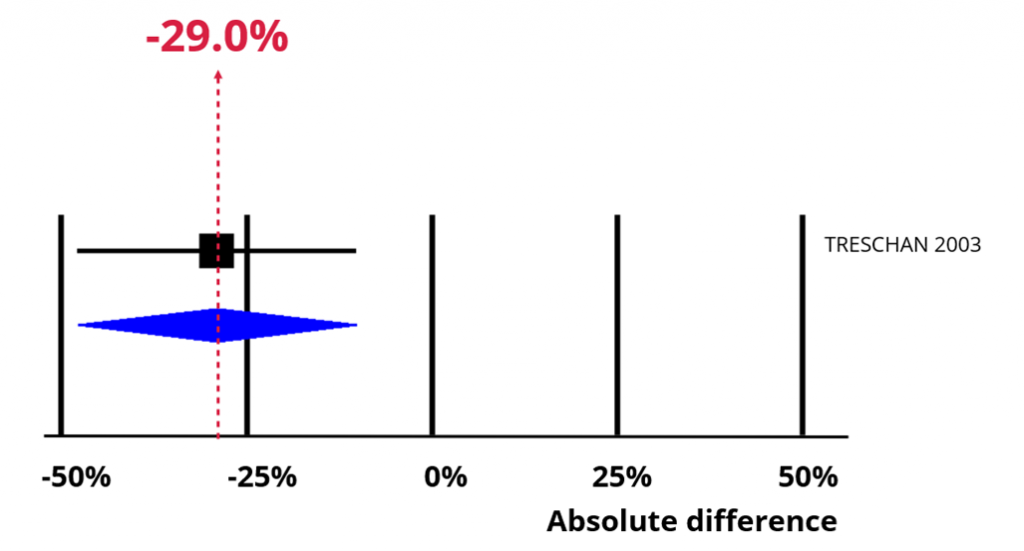Participants are presented with a version of the study protocol that explicitly describes all procedures that may be painful or uncomfortable.
Emphasising pain in information may reduce recruitment.
A decrease of -29% (95% confidence interval = -48% to -10%).
GRADE Low certainty.
We recommend that trialists only emphasise pain in participant information in the context of an intervention evaluation.
See Resource bundle below for details on how to use emphasise pain in participant information.
Imagine a trial that needs to recruit 30 participants and initial recruitment is 30% of those approached. This means you’d need to approach 100 people to recruit 30 of them (see chart).

Now imagine emphasising pain in participant information. The chart below shows the impact of an absolute increase of -29% (95% CI = -48% to -10%). Recruitment is now 1%, which means our best estimate is that 3000 people would now need to be approached to recruit 30 of them.

Trial Forge will make trials more efficient by looking for marginal gains across all trial processes, from research question to implementation into routine care. It will encourage everyone connected with trials to be more sceptical of what we do by asking for the evidence behind all of our trial decisions.